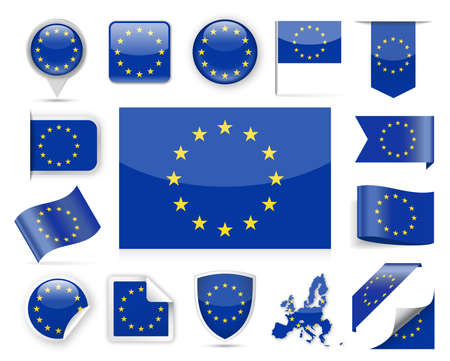1. Understanding Healthcare Changes Post-Brexit
The end of the Brexit transition period marked significant changes for UK travellers seeking healthcare in Europe. Previously, British tourists relied on the European Health Insurance Card (EHIC) for access to state-provided medical treatment during temporary stays in EU countries. However, since Brexit, the reciprocal healthcare arrangements have been redefined. While existing EHICs remain valid until their expiry date, the UK government has introduced the Global Health Insurance Card (GHIC) as a replacement. The GHIC entitles holders to necessary state healthcare in most European countries on the same basis as local residents, but it does not extend to every nation previously covered by the EHIC, nor does it offer identical protections. Therefore, understanding these new terms and limitations is crucial for anyone travelling from the UK to Europe. Being aware of what the GHIC covers—and what it doesn’t—will help you make informed decisions about supplementary health insurance, ensuring you’re prepared for any medical emergencies while abroad.
Assessing Your Health Insurance Needs
Before embarking on your European journey post-Brexit, it’s essential to carefully assess what level of health cover you’ll require. The right insurance not only provides peace of mind but ensures you’re prepared for unexpected medical situations. Here’s how to determine the appropriate protection for your trip:
Consider Your Planned Activities
Your itinerary directly influences the type of cover you should secure. For example, if you’re sticking to city breaks and cultural tours, standard medical cover may suffice. However, if you plan to ski in the Alps or go hiking in remote regions, you’ll need a policy that includes winter sports or adventure activities. Many insurers treat these as optional extras.
Common Activities and Required Insurance Add-ons
| Activity Type | Recommended Cover |
|---|---|
| Sightseeing/City Tours | Standard medical cover |
| Winter Sports (e.g., skiing) | Add-on for winter sports injuries and equipment |
| Hiking/Remote Destinations | Emergency evacuation and mountain rescue |
| Cycling/Touring | Cyclist-specific accident cover |
Evaluate Your Destinations
The countries you visit can affect your insurance needs. Healthcare standards, costs, and access vary widely across Europe. After Brexit, the EHIC/GHIC may offer limited emergency care in some EU countries, but not all treatments or non-EU destinations are covered. Check FCDO travel advice for each country’s healthcare system and potential risks.
Destination Considerations Table
| Region/Country | Special Considerations |
|---|---|
| EU Countries (with GHIC/EHIC) | Basic emergency care; private treatment not covered |
| Non-EU European Countries (e.g., Switzerland, Norway) | No GHIC/EHIC cover; full insurance recommended |
Account for Existing Health Conditions
If you have a pre-existing medical condition, it’s vital to disclose this when arranging your insurance. Some insurers offer specialist policies or add-ons that ensure your ongoing treatments or medications are covered while abroad. Failure to declare could void your policy.
- Check if your current medication is allowed in your destination country.
- Consult with your GP before travel for updated prescriptions and medical documentation.
- Look for insurers who provide 24/7 medical helplines for travellers with chronic conditions.
A thoughtful assessment of your planned activities, destinations, and personal health will help you select suitable insurance – so you can enjoy Europe with fewer worries after Brexit.

3. Choosing the Right Health Insurance Policy
Securing the appropriate health insurance for your travels in Europe post-Brexit is crucial to ensure you’re protected against unexpected medical emergencies. Here’s a straightforward approach to choosing a policy that meets your needs as a UK tourist.
Key Features to Look For
When assessing policies, prioritise comprehensive medical cover. Look for policies that include emergency medical treatment, hospital stays, ambulance costs, and repatriation to the UK if needed. It’s wise to check if pre-existing medical conditions are covered and whether 24/7 assistance services are available in English—this can make all the difference in a crisis. Pay attention to the level of cover offered; for most European countries, at least £1 million of medical cover is recommended.
Common Exclusions
No two policies are identical, so scrutinise the small print. Common exclusions often include untreated pre-existing conditions, injuries from high-risk activities (like skiing or scuba diving), and incidents related to alcohol or drug use. Dental treatment is rarely fully covered unless it’s an emergency. Additionally, travelling against Foreign, Commonwealth & Development Office (FCDO) advice may invalidate your policy altogether.
Reputable UK-Based Providers
Stick with established insurers who have a solid reputation for supporting British travellers abroad. Providers such as Aviva, AXA, Direct Line, and Staysure offer a range of travel health insurance products specifically tailored for trips within Europe. Many also provide customer support based in the UK and have clear claims processes—ideal for peace of mind when you’re away from home.
Final Advice
Don’t simply opt for the cheapest option; weigh up what’s genuinely included. Read independent reviews and consider seeking advice from travel forums or financial advice sites like Which? Travel. Taking time to compare policies means you’ll be better prepared should an emergency arise during your European adventure.
4. Applying for a GHIC or EHIC
Understanding Eligibility
The Global Health Insurance Card (GHIC) and the European Health Insurance Card (EHIC) are crucial for UK tourists seeking emergency medical treatment while travelling in Europe post-Brexit. Most UK residents are eligible for a GHIC, including British citizens, EU nationals living in the UK, and some students studying abroad. However, eligibility for the new UK-issued EHIC is more limited and generally applies to individuals covered by the Brexit Withdrawal Agreement—such as frontier workers, certain pensioners, and some family members of EU nationals.
The Application Process
Applying for either card is straightforward and free of charge. The process is managed by the NHS Business Services Authority. You will need your National Insurance number, personal details, and proof of UK residency. Applications can be completed online via the official NHS website or by post if preferred. It’s essential to apply well ahead of your travel date, as cards can take up to two weeks to arrive.
GHIC vs EHIC: Key Points at a Glance
| Card Type | Who Can Apply? | Where Is It Valid? | How to Apply? |
|---|---|---|---|
| GHIC | Most UK residents | EU countries only (not EEA/Switzerland) | NHS website or by post |
| UK EHIC | Certain individuals under Withdrawal Agreement | EU, EEA, Switzerland | NHS website or by post |
Limitations to Be Aware Of
The GHIC and EHIC are not substitutes for comprehensive travel insurance. They only cover medically necessary state-provided healthcare during temporary stays in participating countries. Private healthcare costs, mountain rescue in ski resorts, repatriation flights, or non-urgent treatments are not included. Additionally, the GHIC does not cover you in Norway, Iceland, Liechtenstein, or Switzerland—only the EHIC may provide some access depending on your status.
Practical Tip:
Always carry your physical card with you when abroad; digital copies are generally not accepted by local health authorities.
5. Preparing Important Documentation
Your Essential Travel Health Documents Checklist
Before setting off on your European adventure post-Brexit, it’s vital to have all the necessary paperwork in order. This step is often overlooked, but having your documents prepared can save you valuable time and stress if you face a medical emergency abroad. Here’s a practical checklist tailored for UK tourists to ensure you have everything at hand.
Insurance Cards and Policy Details
Carry your health insurance card or certificate as proof of cover. If you’re relying on private travel insurance, print out or download the policy details, including your policy number, coverage specifics, and claims procedure. For those using a GHIC (Global Health Insurance Card), make sure it’s valid for the entirety of your trip and keep it easily accessible.
Emergency Contact Numbers
Prepare a list of key phone numbers: your insurer’s 24/7 emergency helpline, the local emergency services number in each country you visit (for example, 112 across most of Europe), and contact information for the nearest British embassy or consulate. It’s wise to store these both digitally (on your phone) and on paper in case of tech failures.
Personal Identification and Medical Records
Always carry your passport as primary ID. Additionally, bring a copy of any prescriptions or medical documents that might be relevant in an emergency—especially if you have pre-existing conditions or require specific medication. Some travellers find it helpful to wear a medical alert bracelet for quick reference.
Pro Tip: Organise Everything Together
Store all these documents in a waterproof folder or wallet within your day bag, not checked luggage. Double-check before departure and share copies with someone at home for extra peace of mind. Taking these small steps ensures you’re well-prepared for any unexpected situations while travelling in Europe after Brexit.
6. What to Do in a Medical Emergency Abroad
Step-by-Step Guidance for UK Tourists
Finding yourself in a medical emergency while travelling in Europe can be overwhelming, especially post-Brexit with new rules and procedures. Here’s a clear step-by-step guide tailored for UK tourists to ensure you get the help you need quickly and efficiently.
Step 1: Remain Calm and Assess the Situation
Your first priority is safety. Take a deep breath, check your immediate surroundings for danger, and move to a safe place if possible. If someone is injured or unwell, try to assess their condition without putting yourself at risk.
Step 2: Call Local Emergency Services
Dial 112, the standard European emergency number, which works across all EU countries. Clearly state your location, the nature of the emergency, and any relevant details. Don’t hang up until you’re told to do so.
Step 3: Inform Your Health Insurance Provider
Contact your travel health insurance provider as soon as it’s practical. Most insurers have a 24-hour helpline; have your policy number and personal details ready. Ask them about approved hospitals or clinics nearby and clarify what documentation or authorisation you might need for your treatment.
Step 4: Use Your GHIC or EHIC Card (If Applicable)
If you have a valid UK Global Health Insurance Card (GHIC) or a still-valid European Health Insurance Card (EHIC), present it when accessing state healthcare facilities. This may entitle you to free or reduced-cost medical treatment, depending on the country’s system.
Step 5: Access Local Healthcare Facilities
Follow your insurer’s guidance on where to go. In most cases, head to public hospitals or clinics for emergencies. If you’re directed to private facilities, check with your insurer first to confirm coverage and avoid unexpected bills.
Step 6: Keep All Documentation
Retain all receipts, medical reports, prescriptions, and correspondence relating to your treatment. These are essential for making insurance claims later and ensuring reimbursement where applicable.
A Few Practical Tips:
- If you need an interpreter, ask hospital staff—many larger hospitals in Europe offer translation services for tourists.
- If your passport is needed for identification, keep it safe but accessible.
No one wants their holiday disrupted by illness or injury, but knowing these steps will help you navigate emergencies abroad with confidence—and get back on track as swiftly as possible.
7. Tips for Hassle-Free Claims and Peace of Mind
Dealing with health insurance claims abroad can feel daunting, especially after Brexit has changed some of the rules for UK tourists in Europe. To help you avoid unnecessary stress, here are some practical tips to streamline your claims process and keep everything running smoothly during your travels.
Keep Your Documents Organised
Before you set off, gather all relevant paperwork – your travel insurance policy, proof of payment, emergency contact numbers, and any required claim forms. Store digital copies on your phone or cloud storage, and bring printed versions just in case. Organisation is key if you need to provide documents quickly at a hospital or clinic.
Understand Your Policy’s Requirements
Every insurer has its own procedures. Double-check what evidence they require for claims – such as original receipts, medical reports, or treatment summaries. Knowing this in advance saves headaches later. If unsure, ring your insurer’s helpline before you travel for clarification.
Act Promptly in an Emergency
If you need medical assistance, contact your insurer’s emergency helpline as soon as possible. They can guide you on approved clinics and next steps. Delaying notification may affect your claim’s success. Always ask for detailed invoices and medical documentation at the time of treatment.
Avoid Common Pitfalls
Don’t forget to check whether your policy covers pre-existing conditions or activities like skiing. Failing to disclose important details when buying insurance could invalidate your cover. Also, make sure you’re familiar with local healthcare systems – not every country uses EHIC/GHIC cards in the same way now.
Stay On Top of Paperwork During Your Trip
It’s easy to misplace receipts or forms while travelling. Set aside a dedicated folder for health-related documents and update it daily. Take photos of all paperwork immediately after receiving it; this digital backup could be invaluable if originals go astray.
Your Peace of Mind Matters
Ultimately, thorough preparation is the best way to ensure peace of mind while exploring Europe post-Brexit. By keeping paperwork organised, understanding your policy, and acting swiftly if the worst happens, you’ll be well-equipped to handle emergencies and avoid unnecessary hassle when making a claim.


